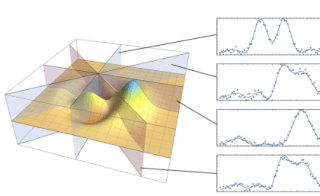Feb 27 2019
Whenever researchers study fast and microscopic objects, they observe the laws of physics operating in an extremely different way compared to the day-to-day “normal-sized” world.
 Physicists have created a new technique to make the observation of quantum movement much easier. (Credit: University of Queensland)
Physicists have created a new technique to make the observation of quantum movement much easier. (Credit: University of Queensland)
It has always been challenging to observe these counterintuitive occurrences in larger objects. Now, physicists from the University of Queensland (UQ) and who are part of an Austrian/UK research team have developed a novel method through which the quantum movement can be observed more easily.
This latest breakthrough could help in applying quantum physics to innovative technologies, for instance, ultra-sensitive motion sensors akin to those found in mobile phones—which are capable of harnessing the unusual properties of quantum motion.
According to Dr Farid Shahandeh, who earned his PhD at UQ and is currently at Swansea University, the latest method was similar to “listening” to a violin by observing its strings.
When a musician plays a violin, each string vibrates at a specific frequency to create a specific sound and the combination or ‘superposition’ of all those frequencies creates the music you hear. If you cannot hear the music, just like Beethoven in the last decade of his life, it is extremely difficult to grasp what is being played only by watching the bow’s strokes. In quantum physics, we are deaf to the sound of quantum ‘violins’ but our new technique uses light to make it possible to hear them.
Dr Farid Shahandeh, PhD, Swansea University.
Although investigators have made considerable advancements in playing quantum instruments, the ability to hear their sound and ensure that it is a melody and not merely a single frequency, is extremely challenging.
According to Dr Martin Ringbauer, a collaborator in the Australian Research Council Centre for Engineered Quantum Systems (EQUS) at the University of Queensland, the new method developed by the team was similar to taking pictures of the moving strings of a violin.
“Other methods try to extract the whole quantum motion at once, but our approach is to reconstruct it from a series of snapshots taken with a strong beam of light,” stated Dr Ringbauer, who is an honorary research associate at the University of Queensland and is presently working at the University of Innsbruck.
“The quantum violin still produces sound in the sense of vibration, although this would be too high-pitched to be audible. The important thing to understand is that you cannot play this violin using a normal bow: you have to use light to make the strings vibrate,” he continued.
Dr Ringbauer further added that the new, flexible approach helped in observing quantum movement in a number of existing experiments where other techniques tend to fail.
The ability to observe and verify the quantum properties of mechanical systems is a vital step in the development of new quantum technologies.
Dr Martin Ringbauer, University of Innsbruck.
The scientists published their findings in Quantum—the open journal for quantum science.